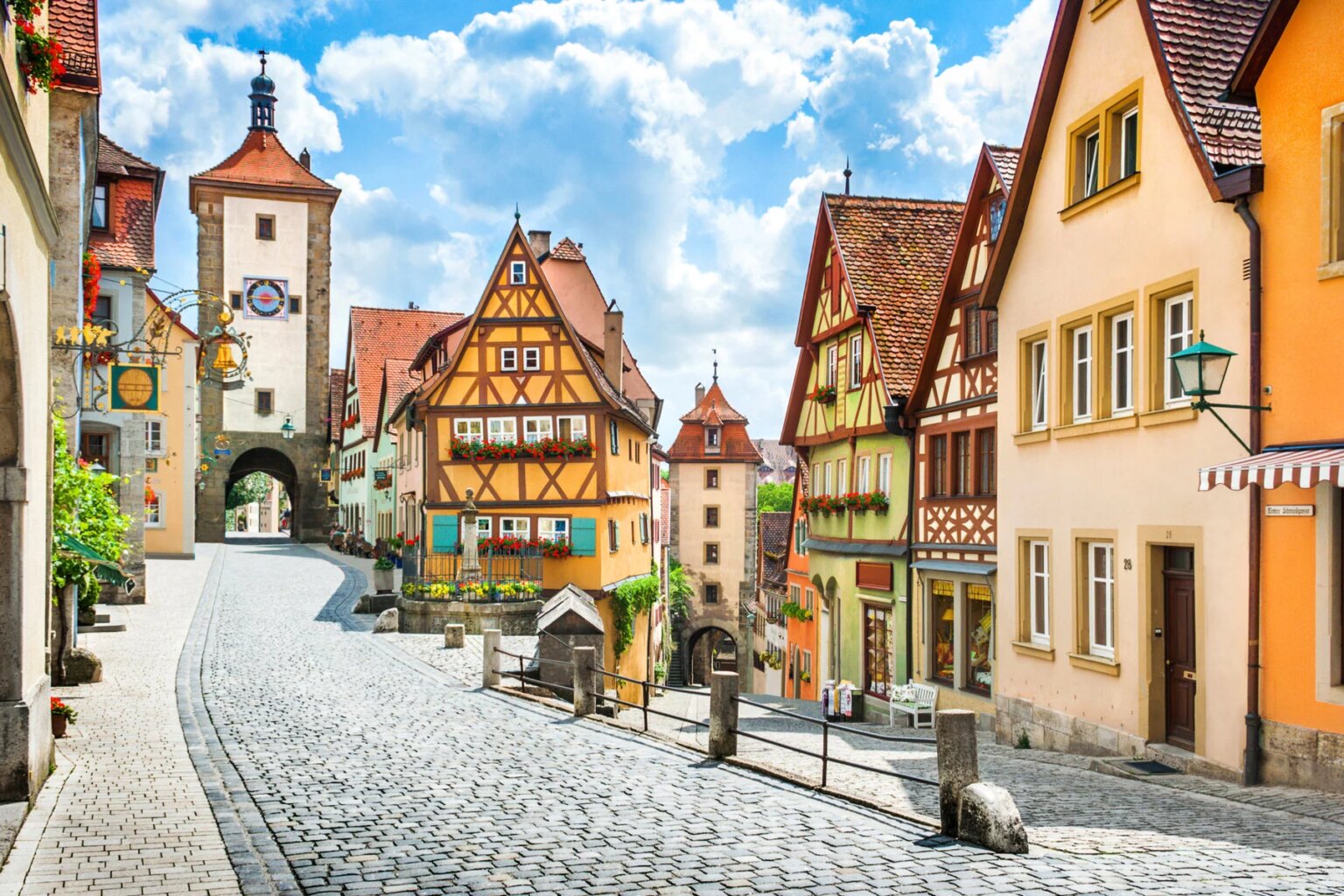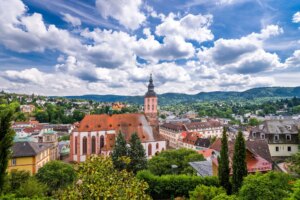With such a diverse range of places to visit in Germany, choosing where to spend your next vacation is no small feat. The country boasts everything from fairy tale castles and enchanting forests to bustling cities and numerous UNESCO World Heritage Sites. So, to help you narrow down your options, here are just a few of the best places to visit in Germany.
- 1. Berlin, the capital of cool
- 2. The Black Forest, which inspired a thousand fairy tales
- 3. Schloss Neuschwanstein, the real Sleeping Beauty Castle
- 4. Cologne, home of chocolate, beer, and a famous cathedral
- 5. Bayreuth, famous for its opera and record-breaking beer museum
- 6. The Upper Middle Rhine Valley, a wine lover’s paradise
- 7. Munich, home of the world’s biggest beer festival, Oktoberfest
- 8. Lake Constance, a scenic gateway to the Alps
- 9. Rothenburg ob der Tauber, Germany’s dreamy fairy tale town
- 10. The Zugspitze, Germany’s tallest mountain
Allianz Travel
If you’re planning to travel, make sure you’re covered for costs of cancellation and other interruptions with Allianz Travel. They offer a range of products, including travel insurance, incoming health insurance, and rental vehicle insurance. With 24/7 emergency contact available, Allianz Travel are there wherever you need them.
1. Berlin, the capital of cool
Exciting and vibrant, Germany’s capital is the center for all that is hip in the worlds of art, fashion, music, and design. The city is teeming with amazing architecture and there are plenty of fun things to do in Berlin. Whether you fancy getting a culture fix at the numerous museums and art galleries, haggling at the various flea markets, or delving into the city’s trendy restaurant and bar scene, you won’t be short of options. Of course, Berlin is also home to several important historical sites and landmarks. These include the Berlin Wall, Brandenburg Gate, Checkpoint Charlie, and the Jewish Museum.
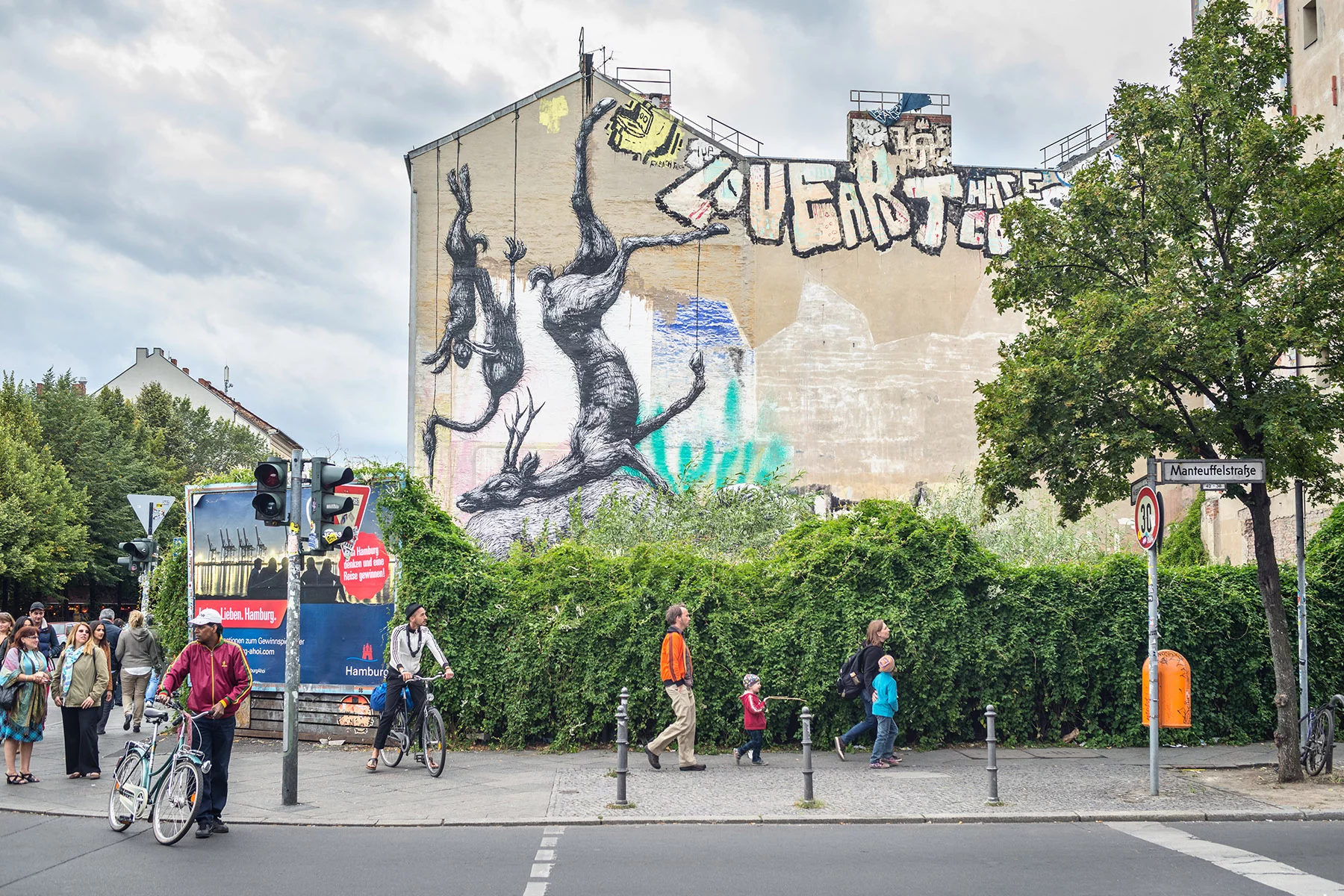
Other must-see sites include Museum Island; a UNESCO World Heritage Site which is home to five of Berlin’s most important museums. With so much to see and do, you might want to make a weekend of it. Luckily, there are plenty of hotels and B&Bs to choose from in Berlin’s vibrant neighborhoods. Find more inspiration, read our guide to the best things to do in Berlin.
2. The Black Forest, which inspired a thousand fairy tales
Growing up, you most likely heard a Brothers Grimm fairy tale or two. Well, why not visit the magical land that supposedly inspired such stories as Hansel and Gretel, Rapunzel, and Sleeping Beauty. Bordering France in the southwest of Germany, the Black Forest covers 11,100 square kilometers of breathtaking natural landscape. Known for its dense, evergreen forests, and beautiful lakes and waterfalls, it’s the ideal place to get back to nature; be it by foot, bike, or horseback.
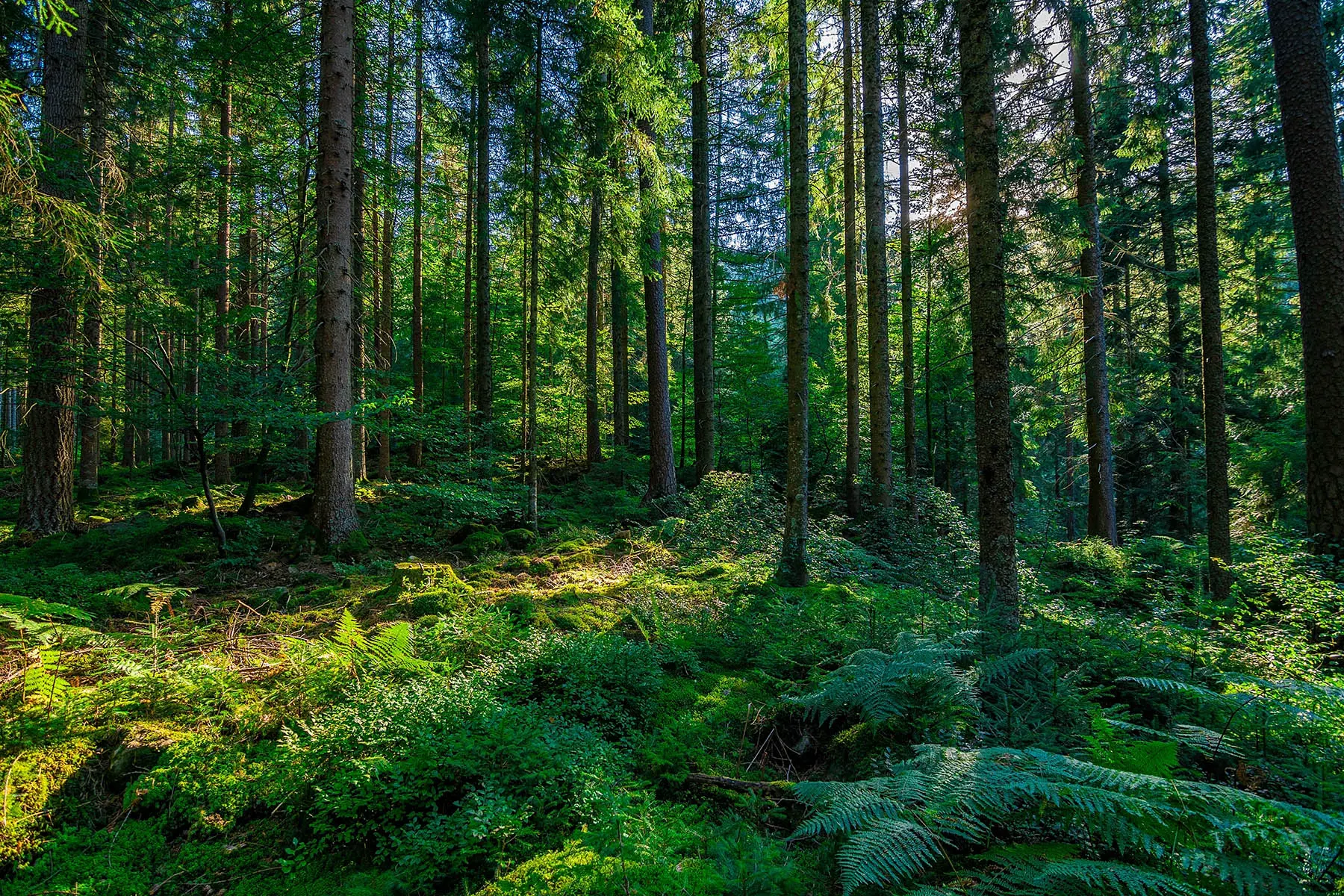
The region is also home to several picturesque villages. These include the world-famous thermal spa town of Baden-Baden, which dates back more than 2,000 years. Back then, the Romans came to bathe in the healing thermal springs. These later became Europe’s summer capital for the rich at the turn of the 19th century. The mineral-enriched waters continue to bubble up from 12 thermal springs for today’s visitors. And you might need to rest your weary bones, too, if you decide to tackle Feldberg; the tallest mountain in Germany (outside of the Alps) which stands at 1,493 meters.
3. Schloss Neuschwanstein, the real Sleeping Beauty Castle
Speaking of Sleeping Beauty, Germany is also home to the breathtakingly beautiful castle that inspired Walt Disney’s version of the palace at Disneyland. Nestled in the mountains in the Bavarian Alps, Schloss Neuschwanstein is the crown jewel of Europe’s fairy tale castles and one of the most popular places to visit in Germany. The stunning palace, which was commissioned entirely for pleasure by Ludwig II of Bavaria in 1869, is famous for its elegant spires that jut up from the treetops.
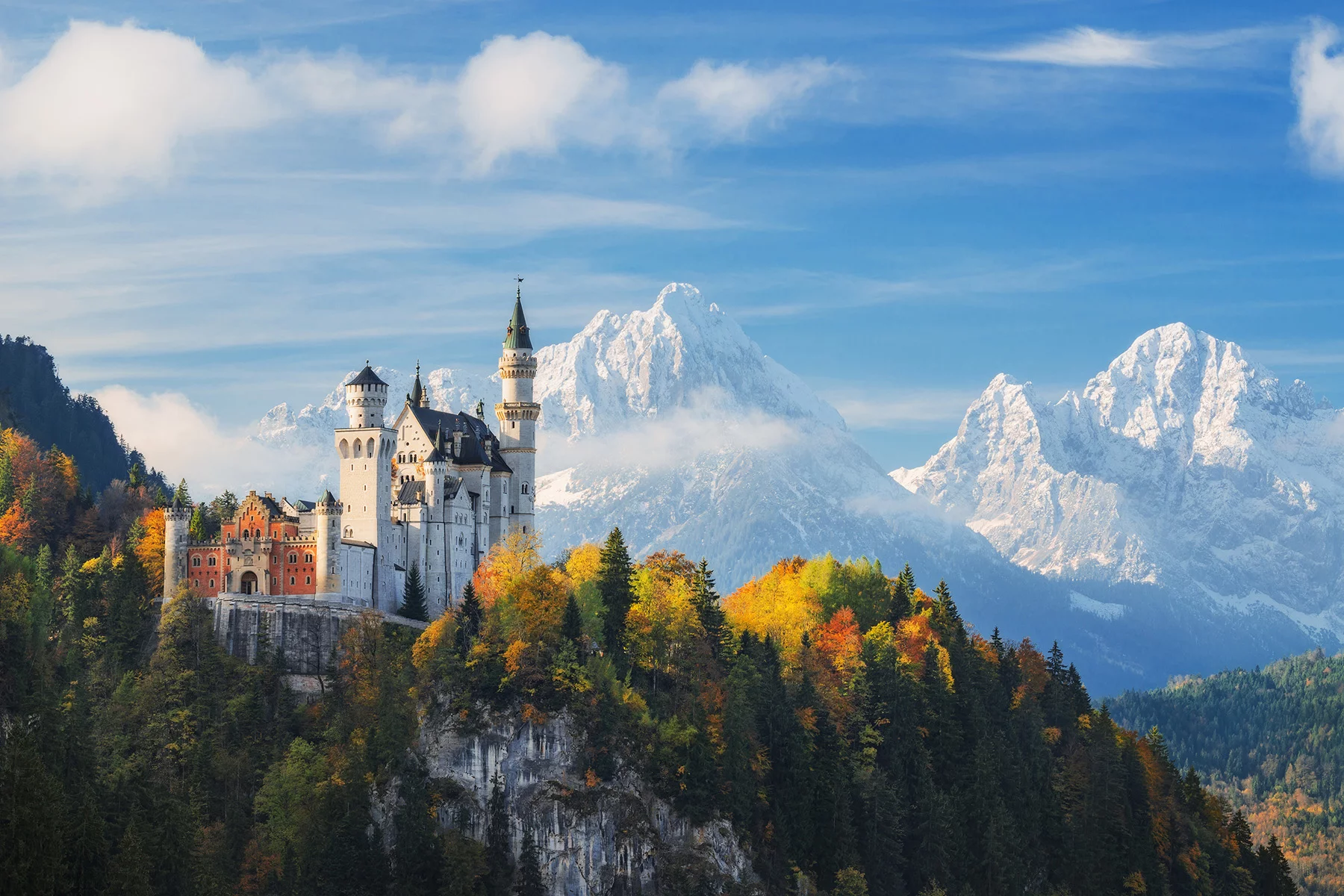
However old you are, your imagination will likely run wild as you explore the exquisite castle; especially when you discover a magical grotto and a throne room featuring a giant crown-shaped chandelier. And the good news is that if you don’t fancy hauling yourself uphill for 30 minutes to get there, you can always hop on a charming horse-drawn carriage and ride to the top. Now, how’s that for the royal treatment! King Ludwig’s other Bavarian castles include the grand Schloss Hohenschwangau, Neues Schloss Herrenchiemsee, and the Schloss Linderhof; all of which you can visit.
4. Cologne, home of chocolate, beer, and a famous cathedral
The epitome of Gothic architecture, the famous Kölner Dom dominates the city’s skyline. The towering UNESCO World Heritage Site also houses the Ottonian Gero Cross; the oldest large sculpture of the crucified Christ, north of the Alps. But beyond this epic landmark, the city is full of great museums, restaurants, bars, and most importantly, chocolate. If you have a serious sweet tooth, you will no doubt love visiting the Chocolate Museum Cologne. This 4,000-square-meter chocolate wonderland features nine exhibition areas that teach you all about the culture and history of chocolate; dating back 3,000 years to the Mayans and Aztecs.

With 2,000 exhibits to see, including a 3-meter-high chocolate fountain into which you can dip a waffle, there’s plenty to make you drool. The museum café also offers a magnificent view of the Rhine from the 30-meter-long panoramic window. But if you’re more of a German beer lover, there are several brewery tours and tastings you can attend. Here, you will get to savor the local beer jewel – Kölsch. Make sure to also check out the brewery taverns in the old quarter where waiters refill your glass until you put a beer mat over the top to say no more. And if you visit Cologne during Carnival celebrations, you should know that this festival isn’t called the crazy days for nothing!
5. Bayreuth, famous for its opera and record-breaking beer museum
Every year, the northern Bavarian town of Bayreuth hosts the world-famous Richard Wagner Festival. The popular event, which celebrates the German-born composer, transforms the town into a hotspot for opera aficionados. But even if you’re not an opera fan, you won’t fail to be blown away by the extravagant interior of the 18th-century Margravial Opera House. This UNESCO World Heritage Site is a masterpiece of Baroque theatre architecture. It seats 500 guests who often come to experience authentic Baroque court opera. Aside from this stunning landmark, Bayreuth boasts a rich culture and heritage. This can be seen in its diverse collection of cultural attractions. These include more than two dozen museums and institutions, as well as several sites of grand historical structures and castles associated with the Margraves of Bayreuth.
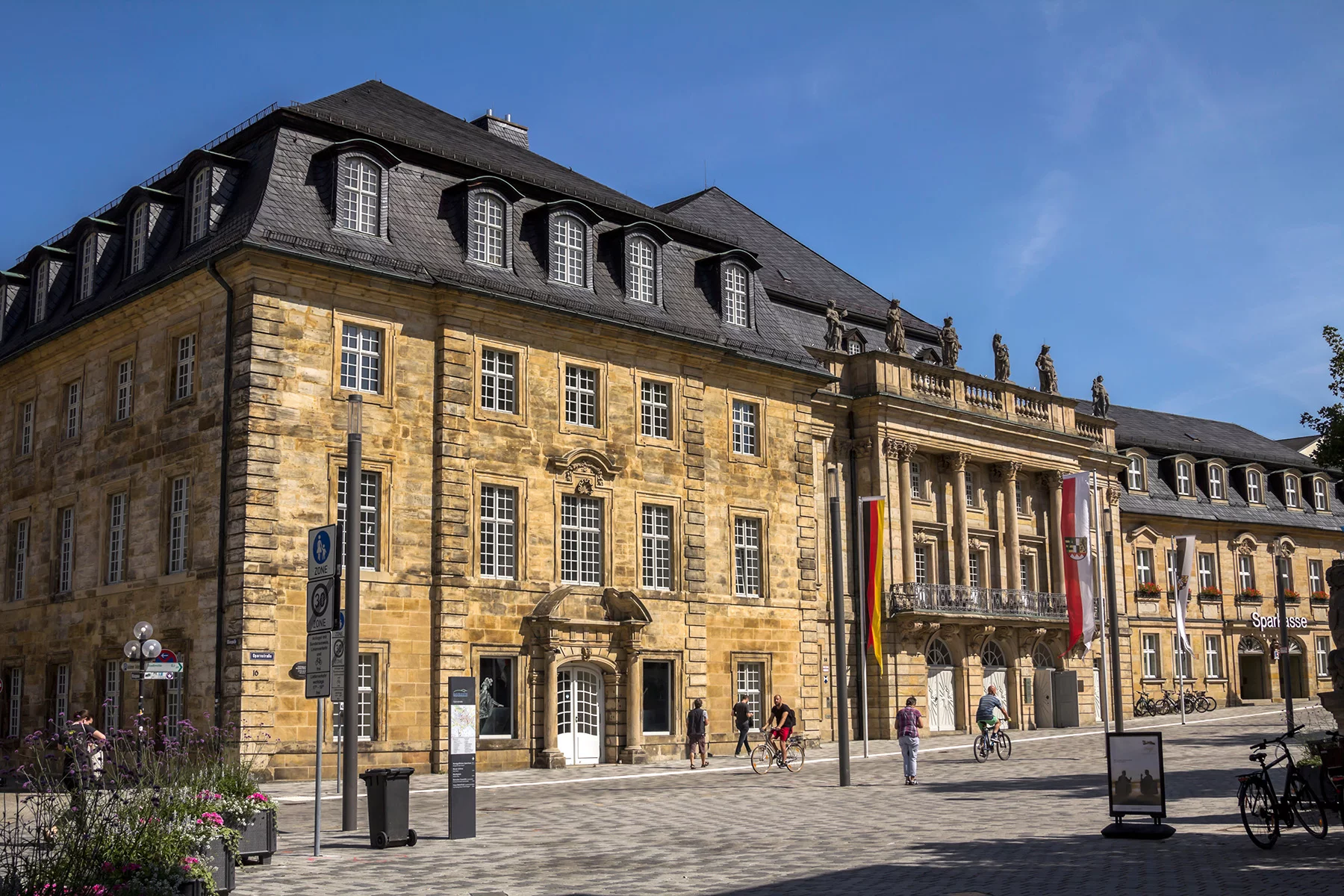
The city is also one of the best places to visit in Germany if you love beer. There are several breweries and museums where you can savor an extensive variety of brews. Among these is the Bayreuth Catacombs which lie underground beneath the Bayreuth brewery. Here, you can navigate the mysterious beer cellar labyrinth and learn about its history before enjoying an Aktien Zwick’l cellar beer in the cozy Bräustüberl (tavern). Meanwhile, the Maisel’s World of Beer Experiences holds the Guinness Book of Records award for being the most comprehensive beer museum in the world. You can take part in brewery tours, beer tastings, and even seminars at the venue. But if you prefer to just relax with a pint, you can always kick back in Bayreuth’s largest beer garden, the Herzogkeller. This is the perfect spot to enjoy a local brew and some traditional brewery cuisine.
6. The Upper Middle Rhine Valley, a wine lover’s paradise
Extending across France, Germany, and Switzerland, the Upper Rhine Valley showcases the very best these three countries have to offer. Scattered with stunning hilltop castles, quaint historic towns, and picturesque terraced vineyards, it’s no wonder part of the region was awarded UNESCO World Heritage status in 2002. The natural landscapes along the River Rhine have inspired many poets, painters, and composers over the past two centuries – and it’s not hard to see why.
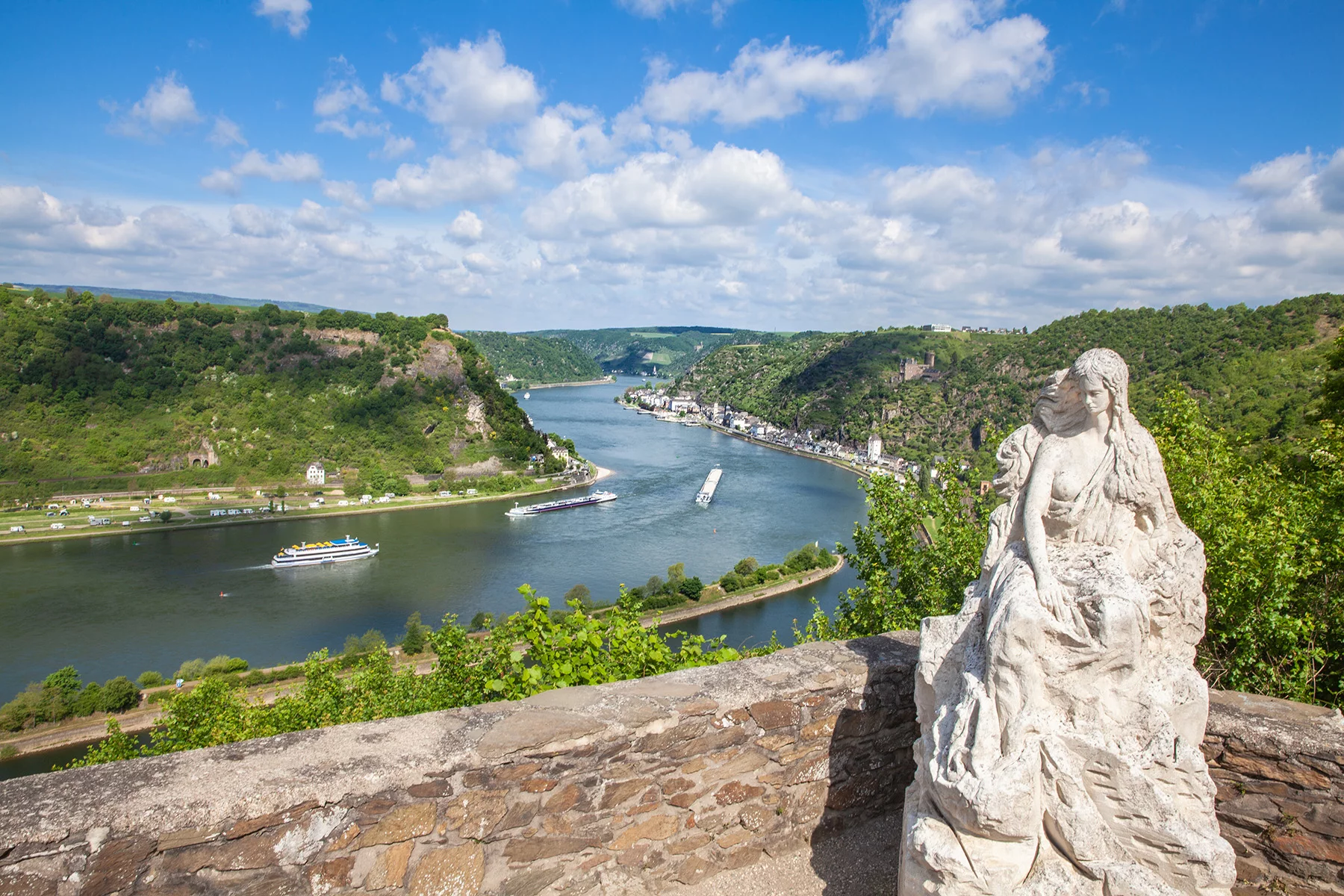
Traveling down the river takes you past the picturesque towns of Bingen and Rüdesheim. It also cuts through a stunningly beautiful valley from the Roman town of Koblenz past the famous Loreley rock; a slate cliff overlooking the narrowest point of the river. Legend has it that a beautiful siren called Loreley would sing and lure sailors to their death on the rocks. Aside from folklore, the Upper Middle Rhine Valley is also home to 500 hectares of steep vineyard slopes that pawn some of Germany’s finest Rieslings. Wine lovers will no doubt be in paradise when enjoying the breathtaking views with a glass of Weisswein in hand. There are several winery tours and tasting experiences to choose from throughout the region as well as numerous hotels to meet all budgets.
7. Munich, home of the world’s biggest beer festival, Oktoberfest
One of the most cosmopolitan German cities to visit is undoubtedly Munich, the capital of Bavaria. Munich is filled with bars, numerous museums, restaurants, churches, and, of course, beer gardens. But what really puts the city on the map is the world’s biggest beer festival, Oktoberfest, which takes place there every autumn. The 16- to 18-day extravaganza attracts more than six million people from around the world and brings a jam-packed schedule of live music, amusement rides, games, and, of course, lederhosen to Munich. Given the immense popularity of the festival, however, booking early is essential as Munich becomes one of the most popular places to visit in Germany during this time.
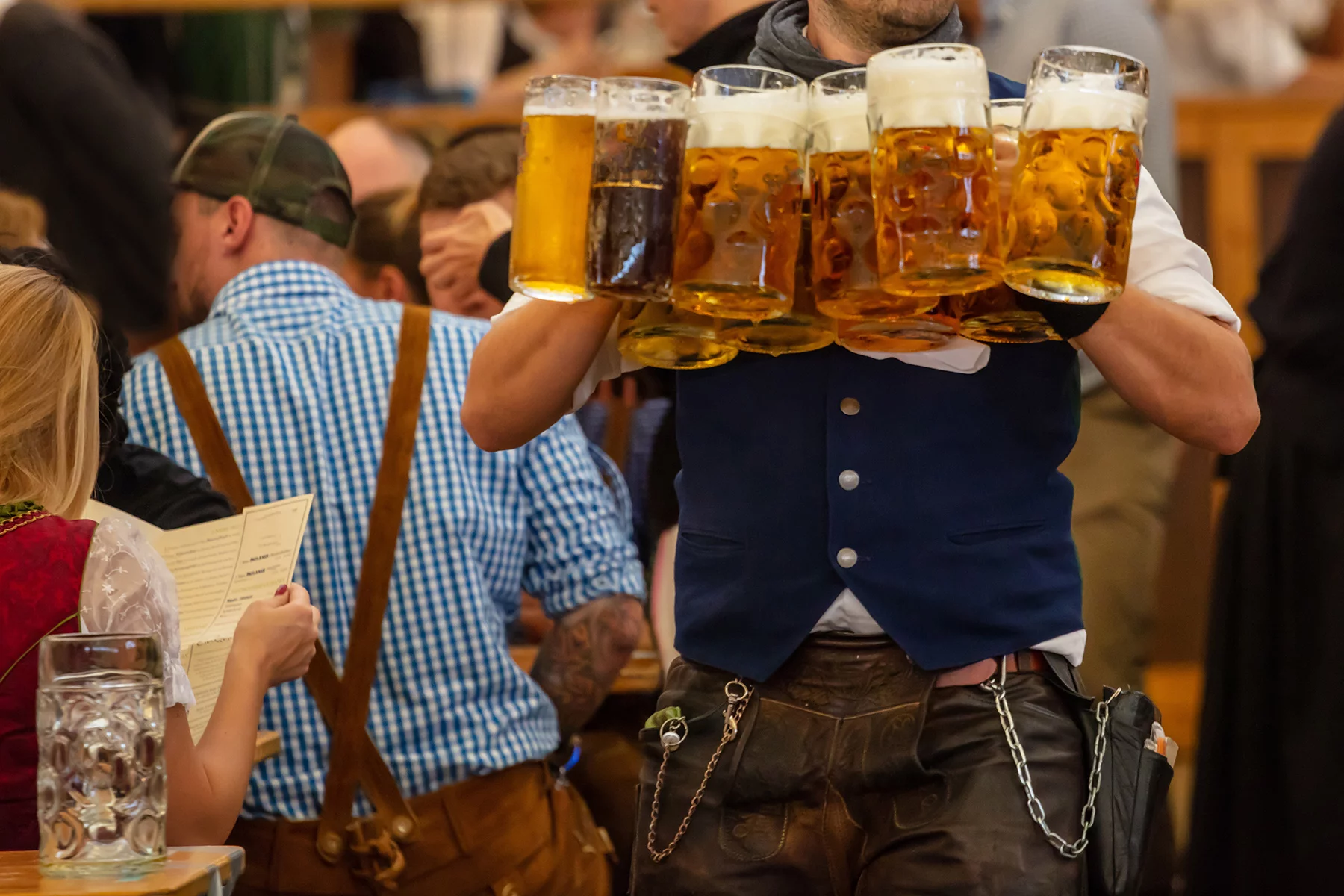
If you don’t fancy mingling with the masses, however, Munich is a fantastic city to enjoy all year round. Among its most popular attractions are the Marienplatz center square, where you will find the Neues Rathaus (New Town Hall), Altes Rathaus (Old Town Hall), and Mariensäule (St. Mary column). For more than a hundred years, the Glockenspiel in the tower balcony of the Neues Rathaus has entertained visitors with twirling figurines representing stories of Munich’s history. The 10-minute show runs daily at 11:00, 12:00, and in the summer months, 17:00. At the top of the 85-meter-high tower, an observation deck offers spectacular views over the city. Meanwhile, in the cellar vault of the Neues Rathaus, the 150-year-old Ratskeller restaurant serves delicious traditional German food.
8. Lake Constance, a scenic gateway to the Alps
Bordering Germany, Austria, and Switzerland, Lake Constance remains one of the most popular holiday destinations in Germany – and for good reason. Its special attraction lies in its versatility, which offers something to suit all tastes. Nature lovers will find plenty of diversity on the islands and in the nature reserves. Those interested in culture, meanwhile, will discover numerous sites to explore in the lake’s cities of Konstanz, Lindau, Überlingen, and Friedrichshafen.

Sports lovers can take advantage of the wide range of water and land activities on offer; whether they fancy sailing, windsurfing, canoeing, or swimming at one of the many sand and pebble beaches. They can also hop in a boat and venture to one of the lake’s scenic islands. There is plenty to explore in the surrounding area, too, including Baroque castles and churches, monasteries, and striking reconstructed Stone and Bronze Age dwellings in Pfahlbauten. But if that isn’t enough, the view of the Alps from the shoreline of Lake Constance alone is reason enough to go there.
9. Rothenburg ob der Tauber, Germany’s dreamy fairy tale town
You might feel like you’ve stepped into the pages of your favorite childhood fairy tale when you visit the dreamy German town of Rothenburg ob der Tauber. Located in the Franconia region of Bavaria, on the popular Romantic Road, the town is famous for its stunning medieval architecture. Half-timbered houses line the cobblestone streets of the old town which overlooks the Tauber River. While strolling through this charming setting and along the town walls, you will discover several preserved gatehouses and towers, old medieval museums, and churches.
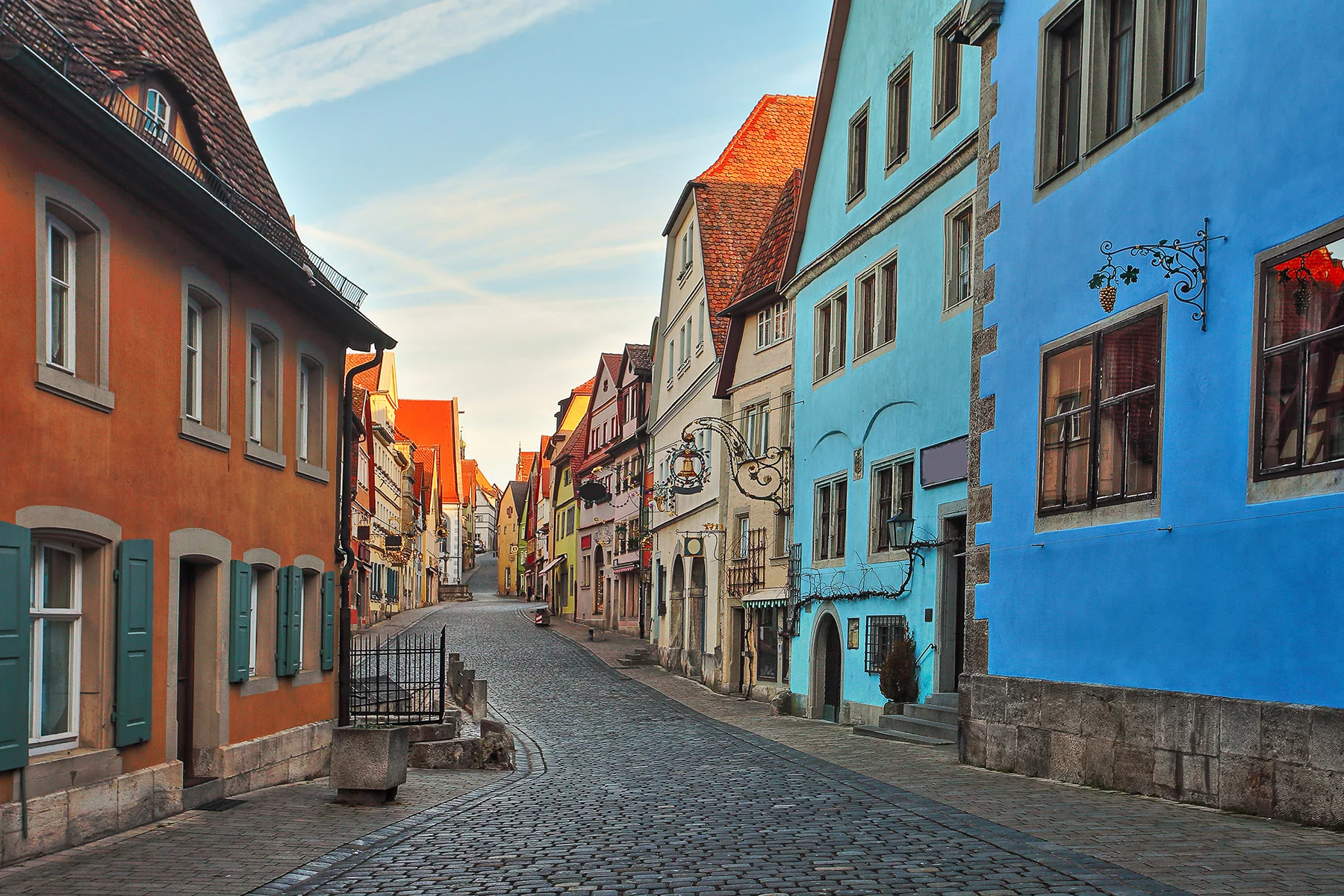
Among them is Kirchengemeinde St. Jakob (St. Jacob’s Church) which sits in the Marktplatz and is considered to be one of the finest such churches in Germany. Constructed in the 13th century, the church houses the famous Holy Blood Altar by Tilman Riemenschneider and stained-glass windows that date back more than 700 years. Meanwhile, the nearby Rathaus (Town Hall) boasts a 50-meter-high tower, which offers fantastic panoramic views over the city. Close by, the 14th-century Ratsherrntrinkstube (Councilor’s Tavern) features an old clock and mechanical figures. These come to life every hour on the hour to reenact the legendary story of the brave mayor who drank nearly a gallon of wine in order to save his city. Come December, Rothenburg ob der Tauber plays host to a world-famous Christmas Market. Unsurprisingly, this contributes towards making it one of the most visited towns in Europe; especially during the festive season.
10. The Zugspitze, Germany’s tallest mountain
If you want to know what it feels like to be on top of the world – or at least Germany – then a journey to the majestic peak of the Zugspitze will surely do it. Straddling the frontier between Germany and Austria, this is Germany’s tallest mountain with a summit of 2,962 meters. Surrounded by steep valleys, the view from the top encompasses more than 400 mountains spreading across the countries. Needless to say, venturing up the mountain is well worth the effort and fortunately, there are two ways to do this.
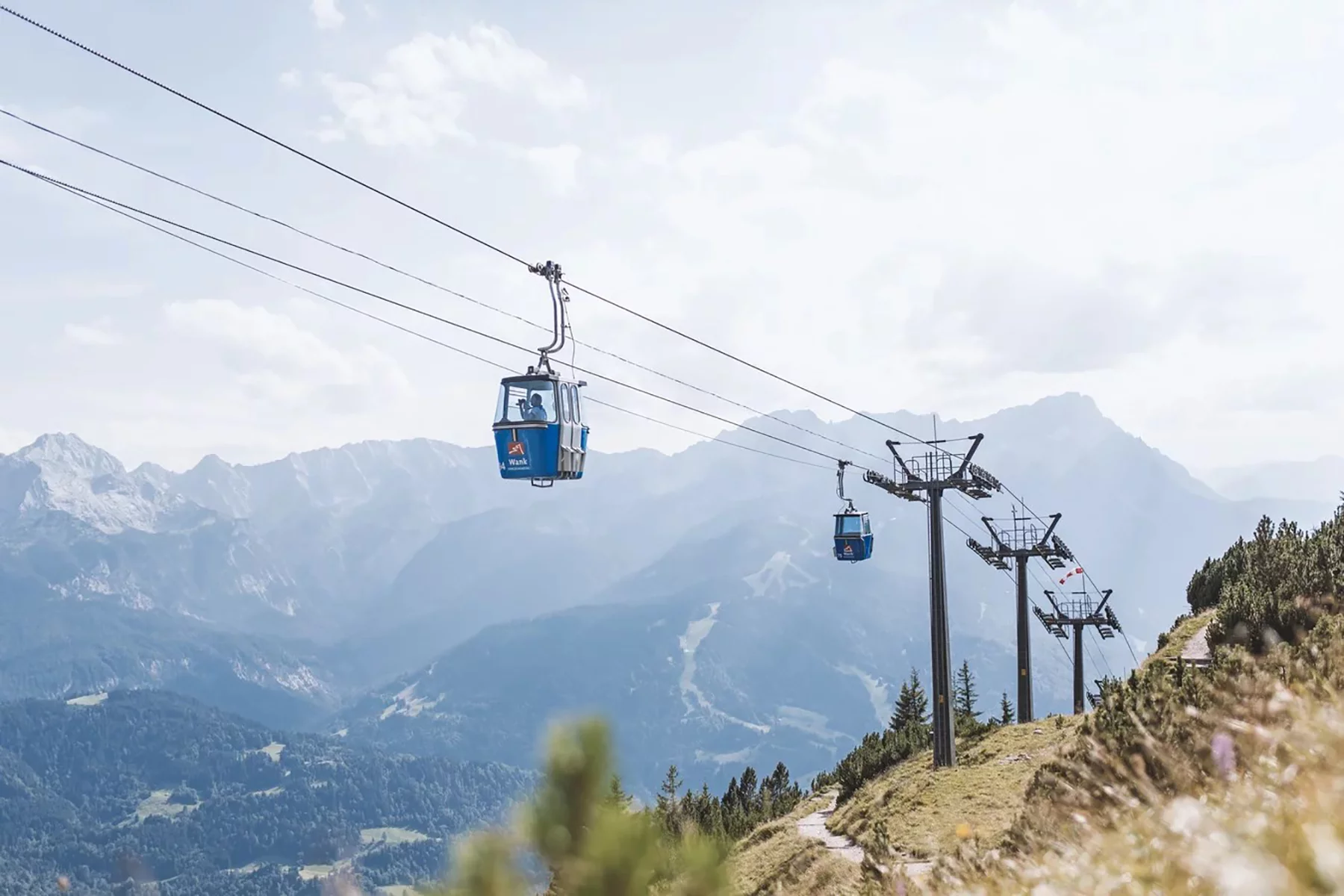
You can either hop inside one of three cable cars or take the Bayerische Zugspitzbahn mountain railway. The latter begins its journey at the Garmisch Zugspitzbahnhof and ends at the Zugspitzplatt glacier station; stopping at intermediate stations along the way. Meanwhile, the world record-breaking cable car brings visitors to the summit in just 10 minutes. Once at the top, you can enjoy jaw-dropping 360-degree views and dine at one of the three restaurants located at different stops. With a plethora of ski resorts located nearby, Zugspitze is also a great option if you fancy a winter vacation and some action on the slopes.
